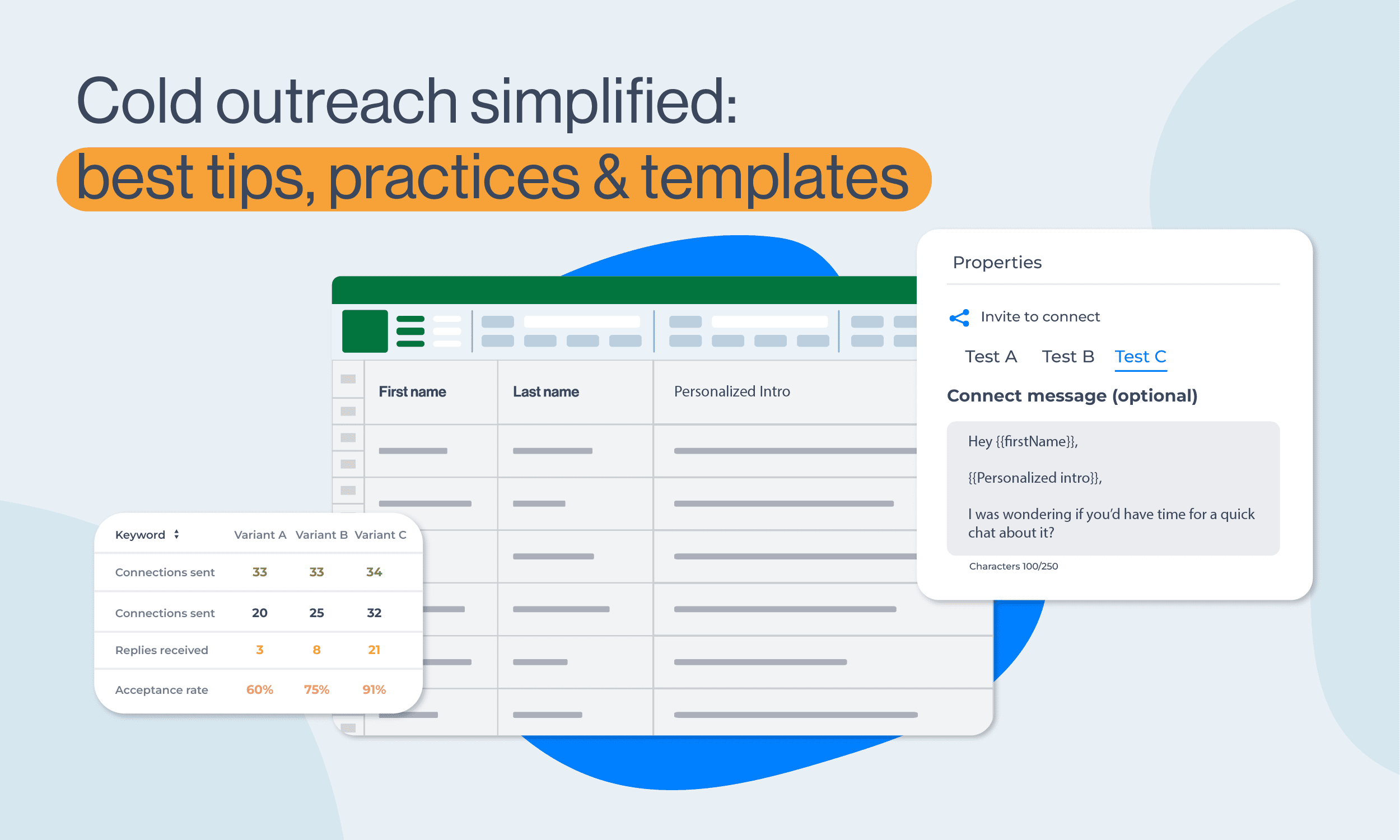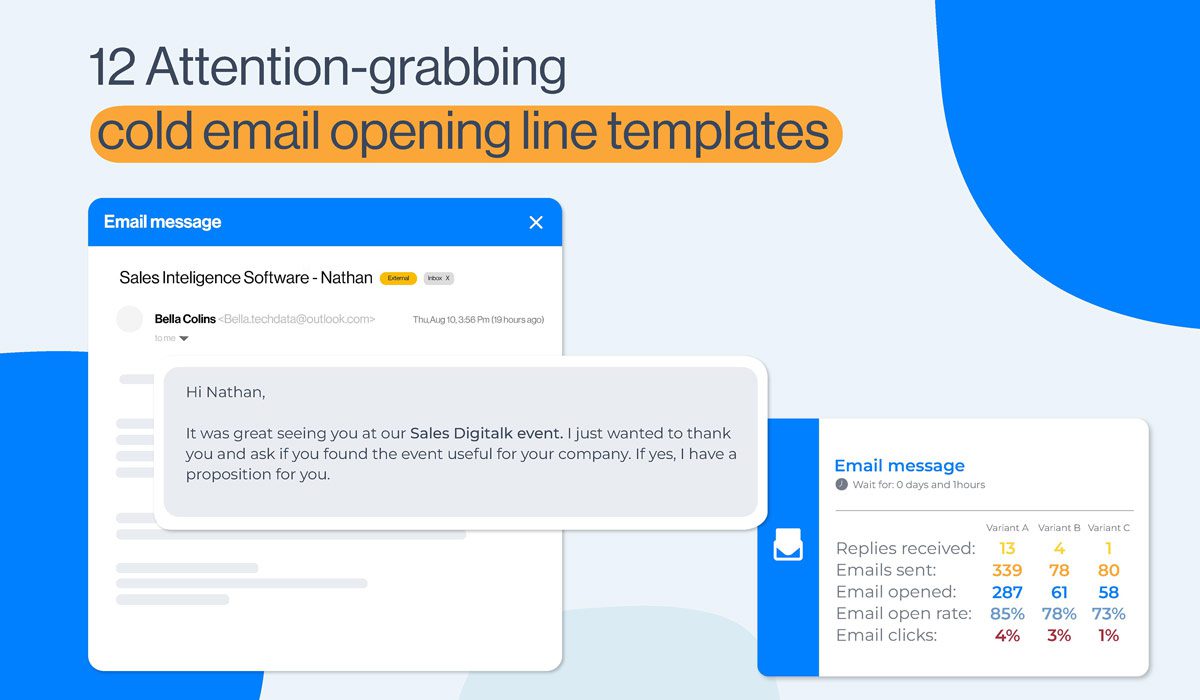Tag: Email Outreach
-
6 best alternatives to Expandi [2026 review]
Disclaimer: Skylead is not affiliated, endorsed by, or connected with LinkedIn in any way. For those who have just started researching LinkedIn automation tools, SaaS startup Expandi appeared on the market in 2019. They initially created software that focused solely on LinkedIn automation. After years of development, many small business sales teams and recruiters started…
-
2026 targeted outreach guide with actionable strategies [+4 message templates]
Disclaimer: Skylead is not affiliated, endorsed by, or connected with LinkedIn in any way. Spread the word about your product or service to as many people as you can, and you’ll surely get someone to buy it. That may be true, but think about how much time and resources you’d spend in the process. Precision…
-
Instantly.ai: Is it worth it? [2026 review + 12 top alternatives]
If you are looking to scale your outreach, you’ve likely come across Instantly.ai. This cold outreach software, launched in 2021, promises to help you find, contact, and close your ideal clients. But before you commit to it, there are a few things to consider. Is it worth the investment? What do others have to say…
-
Objection handling playbook: 7 steps to master [+ 17 winning scenarios]
When talking to prospects, sales reps know that the art of selling revolves around many skills. However, the most important one, hands down, is objection handling. Prospects might give you many reasons why they don’t need your product/service, from “it’s too expensive,” “I don’t have time,” to “I’m happy with your competitor.” Ouch! We know–it…
-
Cold outreach simplified – Best tips, practices & templates 2026
Disclaimer: Skylead is not affiliated, endorsed by, or connected with LinkedIn in any way. At first mention, cold outreach tends to have a bad reputation. It’s no wonder, as no one likes unsolicited emails, LinkedIn messages, or calls. However, real cold outreach is not useless or annoying. On the contrary, it helps your and your…
-
How to write a follow-up email after no response [+23 examples for 2026]
To follow up or not to follow up? Your first email got ignored. We’re sorry to hear that. Most of the time, that will be the case, and that is why you should focus your attention on follow-up emails. But why bother? What if we told you that by sending a single follow-up, you increase…
-
12 attention-grabbing cold email opening line templates
Not thinking a cold email opening line through can cost you a response, a call, or a scheduled demo. The most common mistake rookies make is to invest time into coming up with a catchy subject line and then fail miserably once the email is opened. What makes a sales rep a top-notch performer is…
-
5 tips to sell without sounding too salesy [with LinkedIn templates]
The rules of selling have changed. A formal product presentation days where Sales Representatives would meet face to face with their potential customers are far behind us. Nowadays, around two-thirds of the B2B buyers make their decision via online content. And as you’re not the only one with an online presence, you need to find…
![6 best alternatives to Expandi [2026 review]](https://21608698.delivery.rocketcdn.me/wp-content/uploads/2023/09/Expandi_Alternatives-cover-visual.jpg)
![2026 targeted outreach guide with actionable strategies [+4 message templates]](https://21608698.delivery.rocketcdn.me/wp-content/uploads/2024/08/Targeted-outreach-guide-with-actionable-strategies-cover-image.jpg)
![Instantly.ai: Is it worth it? [2026 review + 12 top alternatives]](https://21608698.delivery.rocketcdn.me/wp-content/uploads/2024/07/instantly.ai-cover-photo.jpg)
![Objection handling playbook: 7 steps to master [+ 17 winning scenarios]](https://21608698.delivery.rocketcdn.me/wp-content/uploads/2022/01/7-steps-to-master-objection-handling-17-winning-scenarios.jpg)

![How to write a follow-up email after no response [+23 examples for 2026]](https://21608698.delivery.rocketcdn.me/wp-content/uploads/2023/11/Follow-up-email-after-no-response-Cover-image.png)

![5 tips to sell without sounding too salesy [with LinkedIn templates]](https://21608698.delivery.rocketcdn.me/wp-content/uploads/2021/08/Sell-without-sounding-too-salesy-Cover-image.jpg)